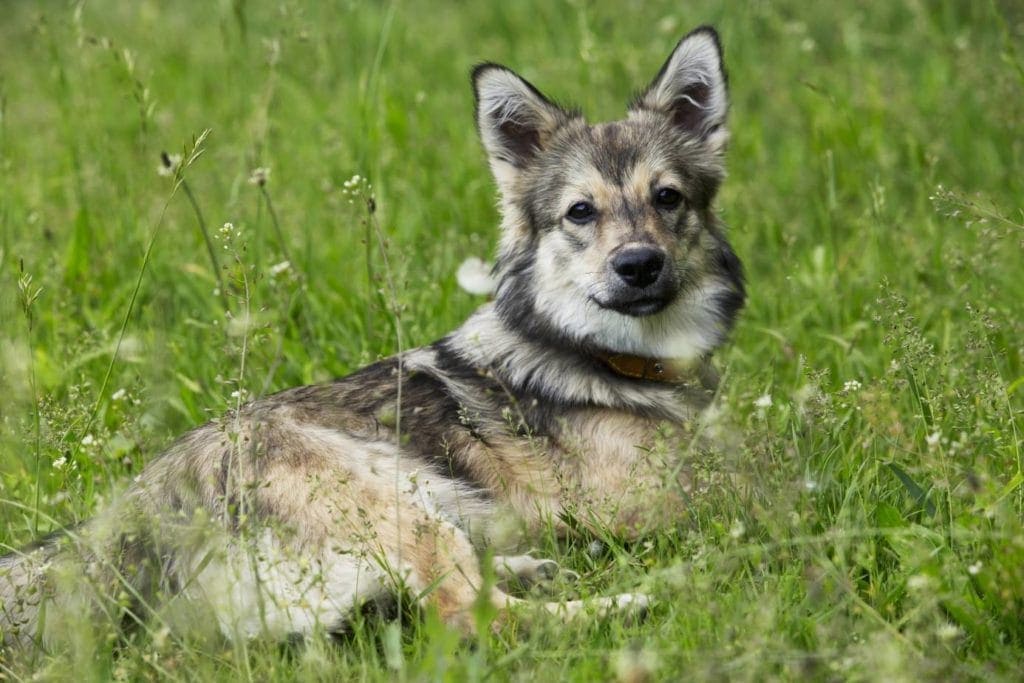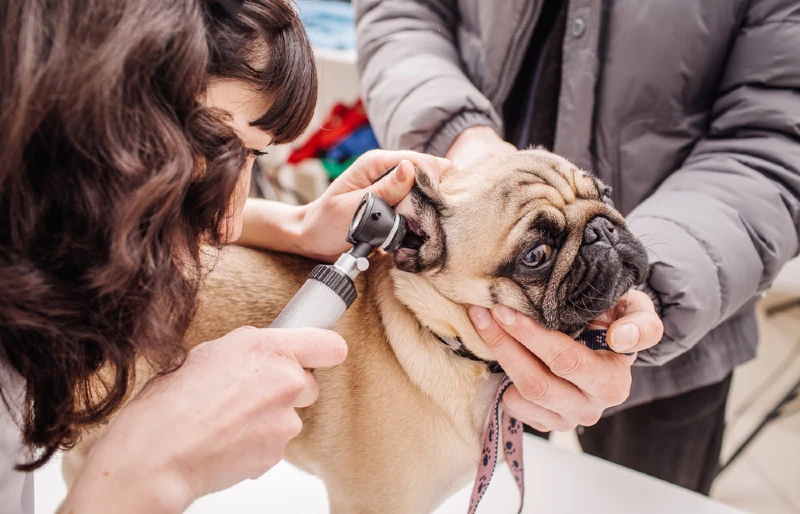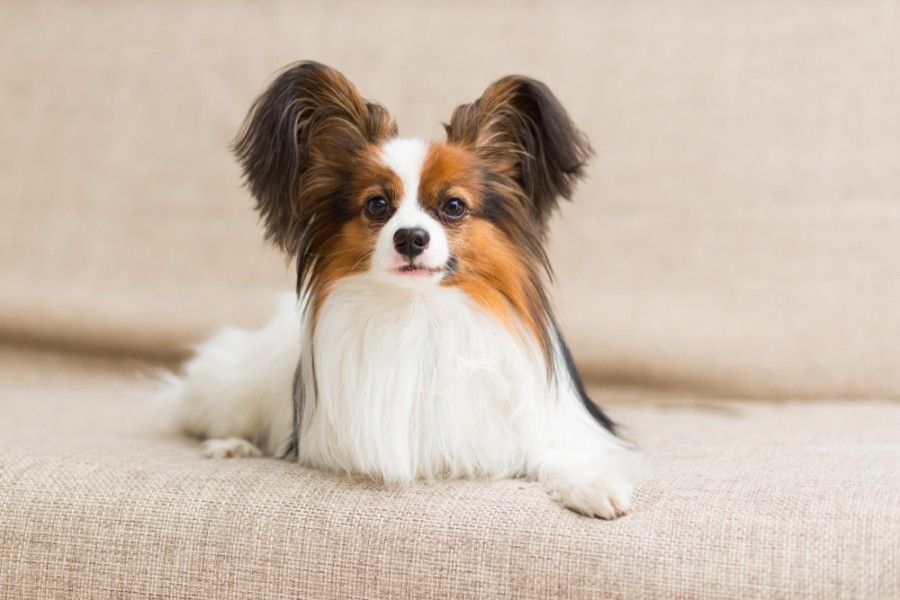10 Guide Dog Breeds: Pictures, Facts, & Traits
By Grant Piper
Updated on
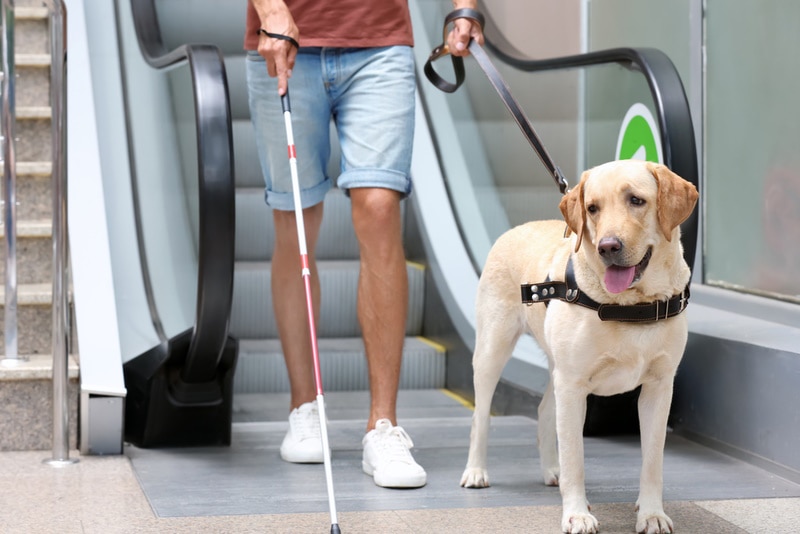
Guide dogs are highly trained animals that perform incredible tasks. Guide dogs are not locked to a single breed. Numerous types of dogs can become guide dogs with the right training and the proper handlers, although some dogs are more commonly spotted as guide dogs than others. Next time you run into a guide dog working in public, there is a good chance they will be one of these amazing breeds.
These are ten of the most common guide dog breeds and what makes them such good choices for this prestigious duty.
The 10 Best Guide Dog Breeds
1. Labrador Retriever
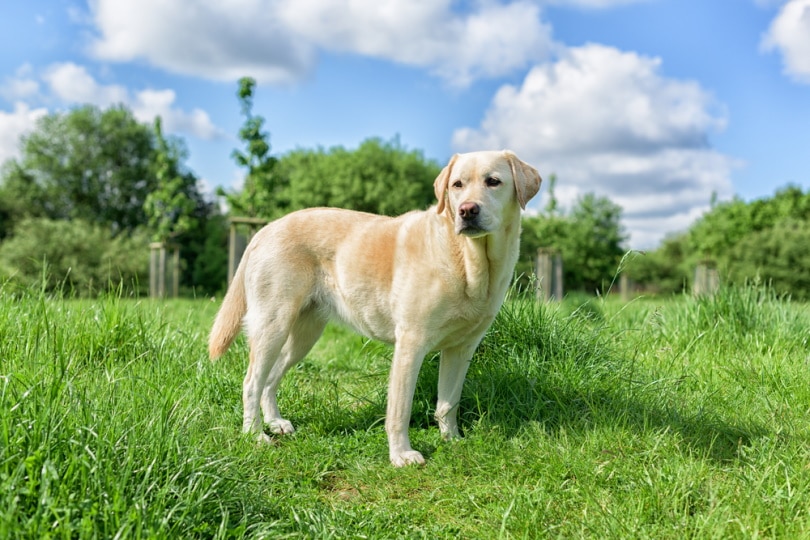
Labrador Retrievers are the most common dog breed used as guide dogs, and it is not hard to see why. Labrador Retrievers are large, loyal, strong, obedient, and have a strong work ethic. Most people don’t use Labs as working dogs any longer, but they were bred for hunting retrieval. That means that most Labs still have the genes of a hardworking dog deep down inside. It is no surprise that these dogs can be trained to lead people around calmly. They also love being around people and rarely cause problems in public. They are also plentiful, making them easy to obtain and screen for advanced training.
2. Golden Retriever
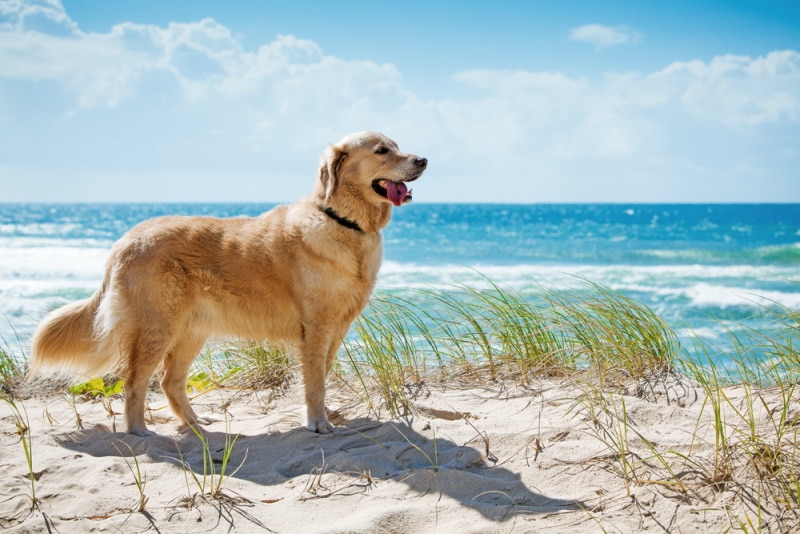
Golden Retrievers are America’s sweetheart dogs, but they are also one of the most common and successful breeds used as guide dogs. Golden Retrievers are large, friendly, calm in hectic situations, and eager to please. That makes them ideal choices as guide dogs. Goldens also have the benefit of being recognizable and will rarely induce fear or trepidation when they are out on the job. It can be tempting to go up and try and pet a friendly-looking Golden out and about with their handler, but you should never touch an active service dog, even if they are an adorable Golden Retriever.
3. German Shepherd
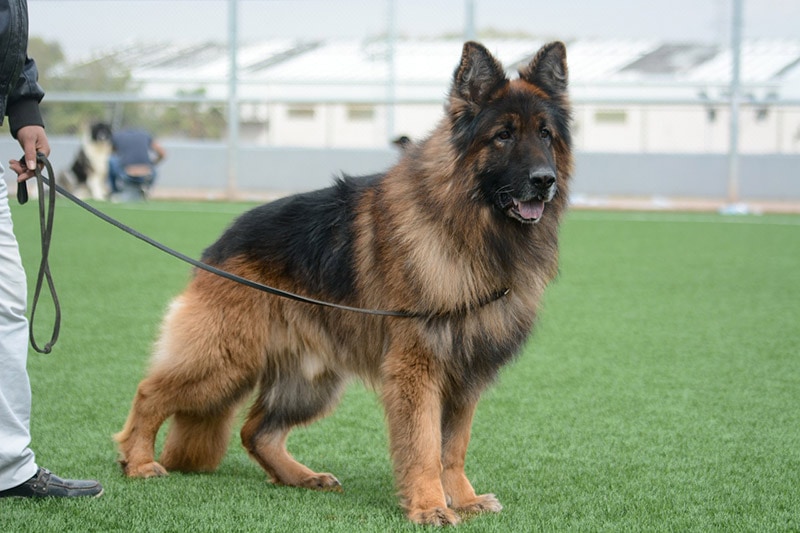
German Shepherds have long been one of the most versatile working dogs in the world. They are prized for their athleticism, intelligence, intuition, and ability to bond with an individual. All of these traits make German Shepherds the ideal guide dog. German Shepherds are easy to train, very perceptive, and strong enough to lead their people out of harm’s way in the face of a dangerous situation. German Shepherds are powerful and high energy, and that can make them hard to handle in some situations, so they might not be the best fit for every individual. However, with the proper handler and trainer, German Shepherds excel as guide dogs.
4. Standard Poodle
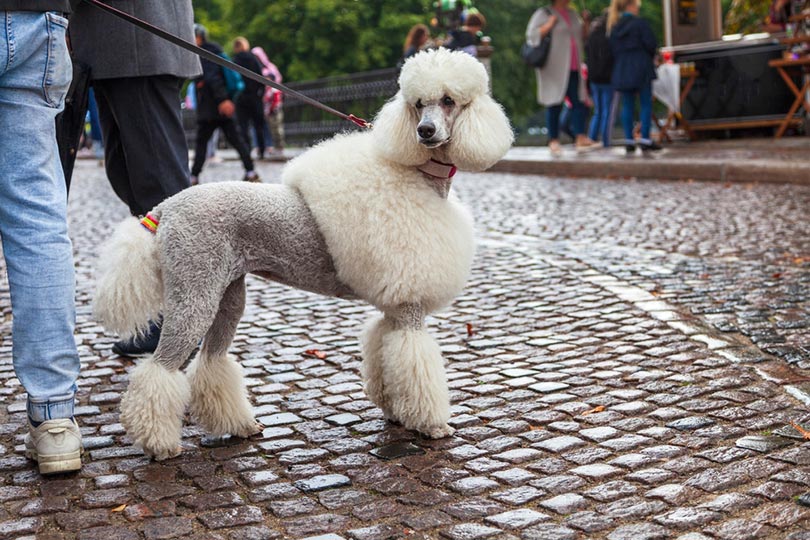
You might not immediately think of Standard Poodles as guide dogs, but they are some of the best. Poodles are used in situations where a person might be allergic to dog fur or are uncomfortable with the level of shedding that a German Shepherd or Golden Retriever produces. Standard Poodles are extremely intelligent, take well to doing a job, and are the proper height to serve as guide dogs. It might seem out of place to see a Poodle with a service dog vest on, but they are absolutely legitimate and good at what they do.
5. Golden Lab (Goldador)
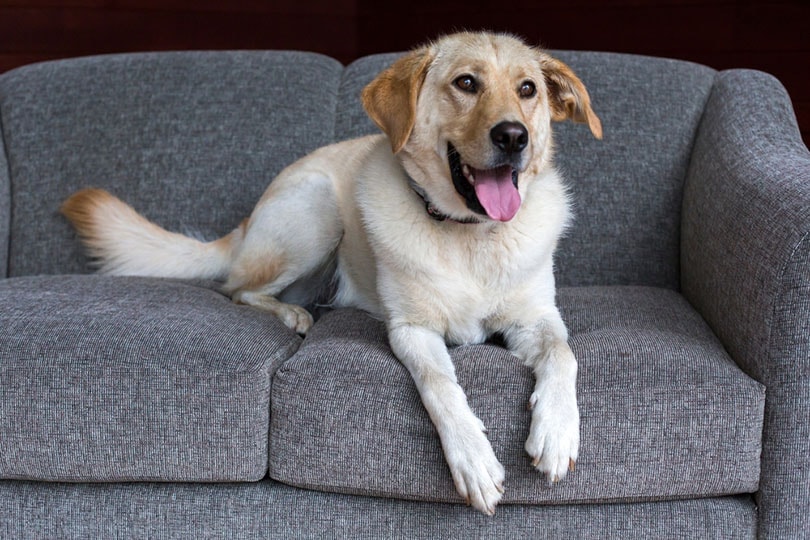
Not all guide dogs are purebred. Some guide dogs are mixes that are carefully selected for desirable traits. Some guide dog trainers have claimed that Golden Labs or Goldadors are some of the best dogs they’ve ever worked with. Golden Labs are a mixture between a Golden Retriever and a Labrador. Goldens and Labs are two of the most common breeds used as guide dogs, so it is no surprise that a Golden Lab is also an excellent choice. Golden Labs are intelligent, large, and eager to please, which makes them ideal candidates for guide dog training.
6. Boxer
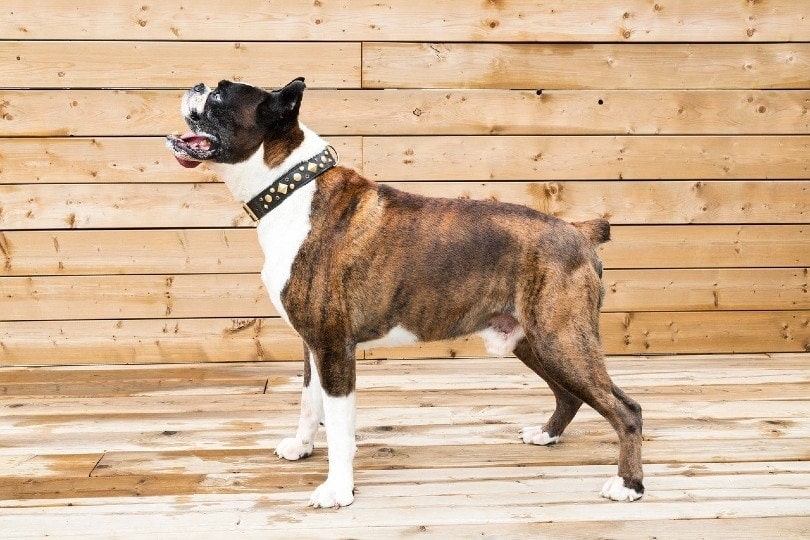
Boxers are another breed that can often be found working as guide dogs. Boxers are great because they are the ideal size, have good personalities, and excel at completing a job once they are trained. Boxers do great in public and are always friendly and welcoming to new people. They are also bulky and strong, which allows them to firmly guide their owners when necessary. Boxers also form deep bonds with their masters, which is a desirable trait for any service dog.
7. Border Collie
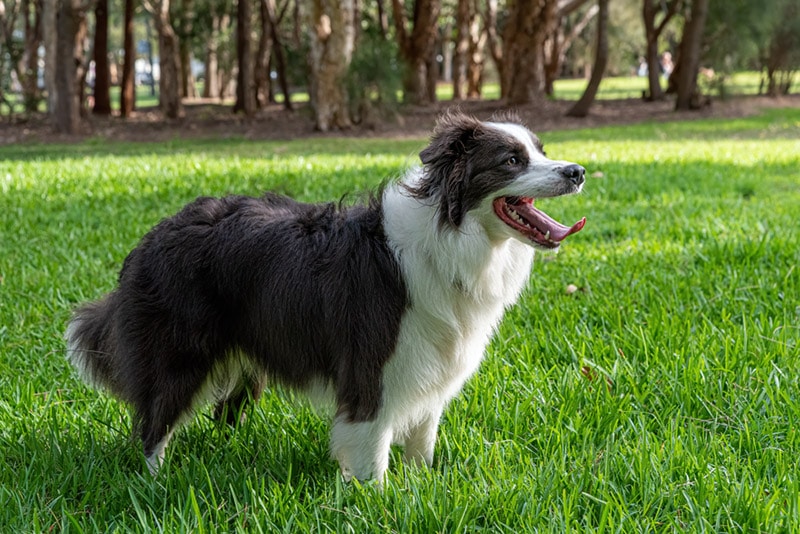
Border Collies are some of the most intelligent dogs in the world, and that makes them ideal candidates to be guide dogs. Guide dogs need to be intelligent, trainable, hardworking, and determined in order to succeed. Border Collies have all of these traits. Border Collies take to jobs very well, and they have an expansive vocabulary that allows them to learn a large variety of commands and tasks. Sometimes Border Collies can be a little too hyper and reactive to make good guide dogs, but many still make it through screening and training and take to the streets helping people get around.
8. Doberman Pinscher
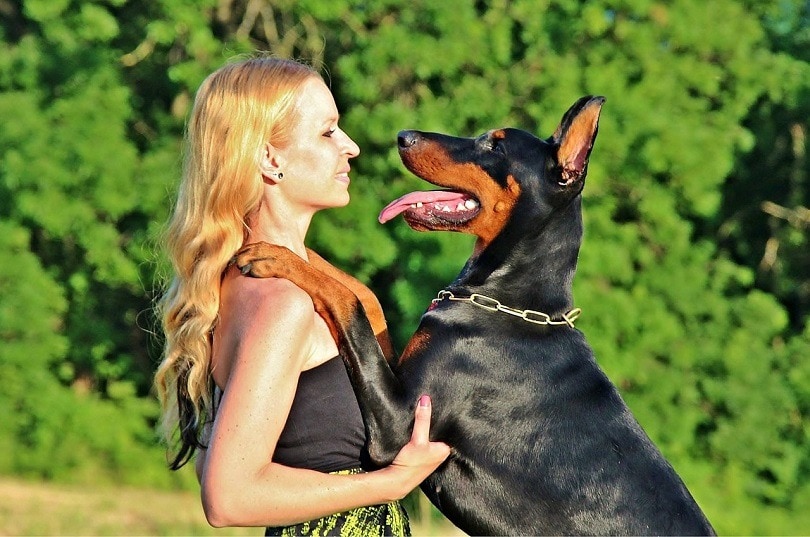
Doberman Pinschers are known for forging strong bonds with their people. They are loving and intensely loyal to their handlers. Dobermans can be trained to do a variety of jobs, including guard dog, protector, guide dog, and other types of service dogs. They enjoy being taught new things, and they love nothing more than pleasing their handler. For these reasons, Doberman Pinschers are often seen performing the duties of a service dog, including as a guide dog.
9. Labradoodle
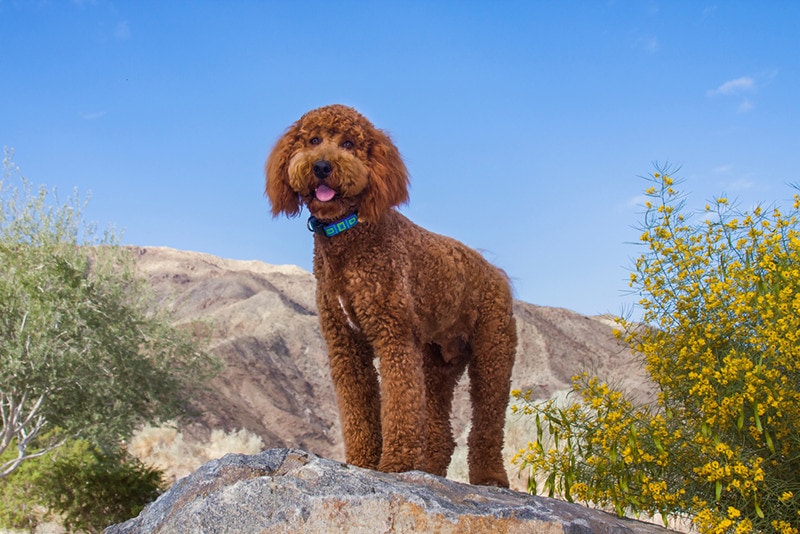
Labradoodles are another mixed breed that can be trained to be guide dogs. Labradoodles take the intelligence of a Poodle and the eagerness of a Labrador and combine them into one excellent package. They are also less allergenic and shed less than a typical Labrador, which is great for people who have allergies. Labradoodles are smart, hardworking, and loving. Like the Golden Lab, these dogs prove that some mixed breeds can be just as well trained and successful as purebred dogs when it comes to becoming a working guide dog.
10. Chesapeake Bay Retriever
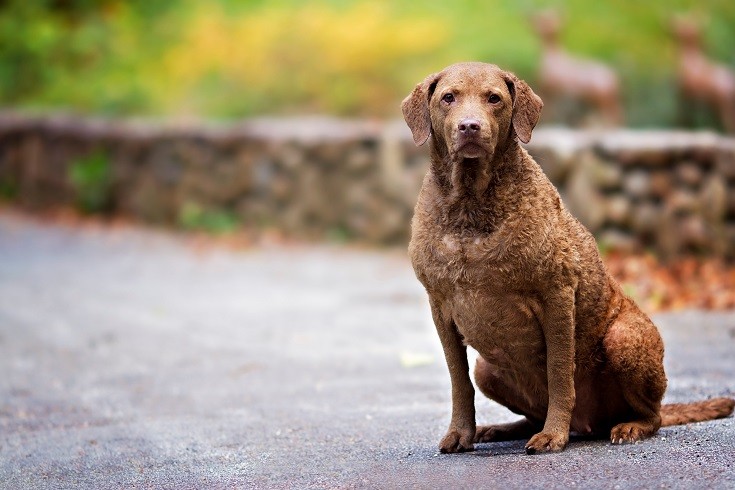
Chesapeake Bay Retrievers are related to Golden Retrievers and Labrador Retrievers. They might not be as popular as their cousins, but they have many of the same traits that make them great guide dogs. Chesapeake Bay Retrievers are friendly, loyal, hardworking, and intelligent. They are the right size and have the right temperament to become full-fledged service dogs. Chesapeake Bay Retrievers were originally bred as working dogs, so they really enjoy having a task and sticking to it. These dogs are quite energetic, so they might need more exercise or stimulation than other breeds on this list.
What Makes a Good Guide Dog?
Height
Interestingly enough, one of the primary traits of a guide dog is its height. Guide dogs have to stand at a specific height so a person can hold onto them with their arm outstretched. If dogs are too short, people will have to hunch to grip their dogs properly. If they are too large, a person will have to hold their arm up, which can be tiring. A guide dog has to be the perfect height for someone to hold onto them for long periods of time without getting sore or tiring out. That disqualifies many dogs based on size alone. Height is the reason why dogs like Labs, Goldens, and Poodles are prized. They all stand about the same height and are the ideal size to serve as guide dogs.
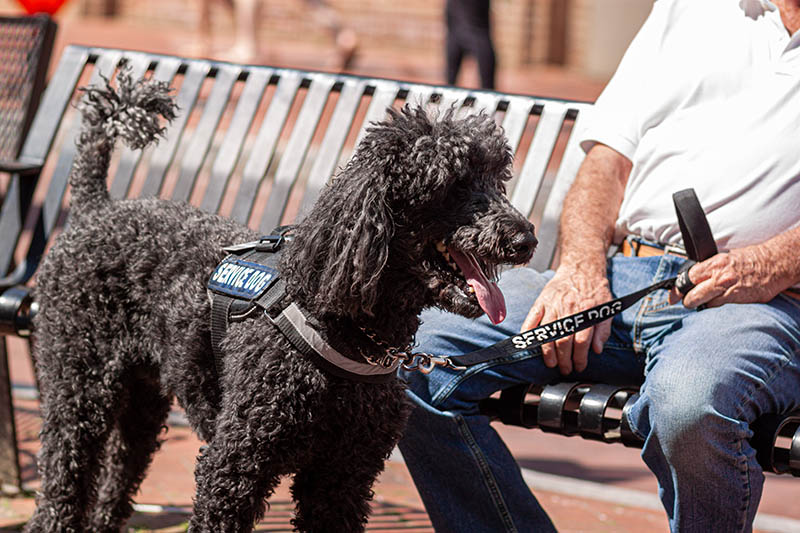
Temperament
Guide dogs also have to show a calm temperament. Guide dogs have to be in complicated situations with strangers around. They have to be calm around cars, strangers, unpredictable noises, and in unfamiliar places. Dogs that suffer from anxiety or fear or show signs of aggression cannot be placed as guide dogs. Guide dogs can never bite anyone or cause a public disturbance. For that reason, dogs are screened during training for the proper temperament. Dogs like Boxers, Poodles, and Labradoodles are chosen because they are friendly and calm and rarely show signs of aggression toward people, even in stressful situations.
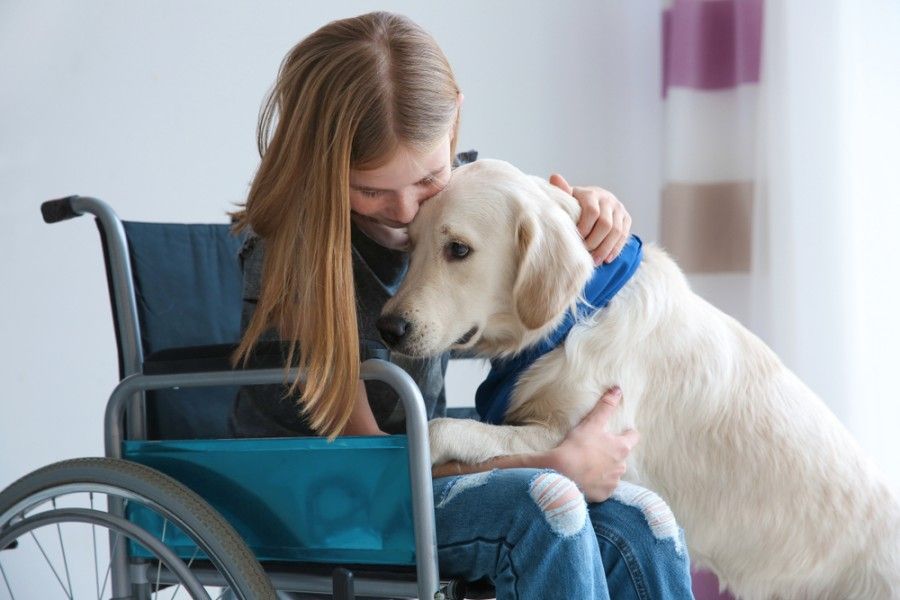
Intelligence
Lastly, guide dogs have to show some level of intelligence. Guide dog training is robust, and dogs need to have the mental capacity to learn a series of complex commands and show heightened situational awareness. Not all dogs are capable of this type of behavior. It is no surprise that dogs like Border Collies, Poodles, and Shepherds are on this list. They are also some of the most intelligent dog breeds in the world. The type of intelligence that is prized includes trainability, eagerness to do a job, and the ability to retain specific information for long periods of time.
 Conclusion
Conclusion
This list has a little bit of everything. There are classic dogs like the German Shepherd and the Labrador Retriever. You also have crowd favorites like Poodles and Boxers, as well as some mixed breeds that can hang with the best of the purebreds. Guide dogs need to be the right height, temperament, and intelligence to do their jobs effectively, and all of these breeds fit the bill.
Featured Image Credit: Africa Studio, Shutterstock

